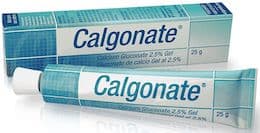
Curated with aloha by
Ted Mooney, P.E. RET

The authoritative public forum
for Metal Finishing 1989-2025

-----
Hydrofluoric acid disposal for small lab
July 10, 2008
I am putting together a small lab for plating for micro-optic devices.
we use about 100 ml of hydrofluoric acid (pH ~ 0) daily to release the microstructures.
what is a reasonable way to dispose of this?
we could use some sort of bucket and add NaOH periodically.
we will have a small (20 gal?) central holding tank for wastewater monitoring; perhaps the neutralization could be done here.
I prefer to minimize handling of the acid since there is always a risk of injury.
regards,
processing, designer - Richmond, California, USA
July 12, 2008
Yes, HF is indeed very scary stuff. I assume you are talking about
48% (full strength as usually supplied) HF.
I would start out with about 2 liters of tap water in the treatment tank - add your waste acid, mix well, then add a slurry of lime until the pH is about 9, again with thorough mixing. An insoluble precipitate of CaF2 will sink to the bottom, leaving a decant that will contain 10 - 20 mg/l dissolved fluoride.
When the tank is full, the decant water would likely be legal to discharge, provided you have the appropriate permit. Talk to the Richmond POTW people - they are pretty good about working with you.
(I had some dealings with them when I was an environmental consultant in the Bay Area) Lots easier, IMHO, than the corresponding authorities in SF or Santa Clara Co.
The solids may have to be hauled as haz waste, though calcium fluoride is a very inert material and there is little hazard in handling it, as long as the treatment was done properly.

Dave Wichern
Consultant - The Bronx, New York

Never use HF anywhere unless trained!
If you do, you MUST have the antidote gel on hand for instant use!
Calcium Gluconate
for HF acid burns

on eBay or
Amazon
(affil links)
Dave Wichern's advice is good but to add a couple of points.
HF burns require specialist and rapid first aid. You should obtain a supply of calcium gluconate gel - and know how to use it - BEFORE you even get any HF delivered on site.
You mention pH 0. pH is meaningless at this degree of acidity. Any attempt to measure it will very rapidly destroy a pH electrode and colour indicators will probably be destroyed.
You should really have a chemist involved in this type of project.

Geoff Smith
Hampshire, England
August 3, 2008
The glutonate needs to be injected in the area below the burn and is a prescription item in Florida. I could not get a prescription, but I did get the hospital to carry a small amount in the ER.
Dilution is the key. 70% HF is a terrible tiger. 48% is just plain bad. 5 % is not bad with normal acid precautions but can cause severe problems. Use about 1.0N NaOH [1N NaOH on
Amazon [affil links]
for neutralization and you will not have an explosion of the diluted HF material.
- Navarre, Florida
August 5, 2008
August 5, 2008
Hi, Jim. Injecting calcium gluconate might be helpful, and I would certainly expect that injectable things are only available with a prescription and only a trained practitioner would do the injecting. But 2.5% calcium gluconate is a proven topical burn ointment, available without prescription, and it should be on hand.
Regards,

Ted Mooney, P.E.
Striving to live Aloha
finishing.com - Pine Beach, New Jersey
The problem with treating the top of the burn is that it does not significantly affect the bottom of the burn. There is some chemical that is injected, and I do not remember what it was. HF has a nasty habit of just keep going and going--deep!. It may appear to heal, but it will fester up again and again. A 1/8" spot on a knuckle came back at least a dozen times over a 3 year period. No, I did not treat it and it was 70% HF. (what gloves?) Did not even know that it was there till the damage was well under way.
Anybody using HF needs to really read the MSDS very carefully and assume that it is understating the risks.
- Navarre, Florida
August 6, 2008
Q, A, or Comment on THIS thread -or- Start a NEW Thread